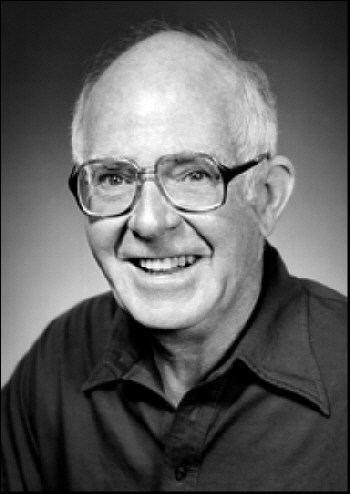Pioneering physical chemist and physics Nobel laureate Ray Davis has died at his home in New York. Davis, who spent most of his career at the Brookhaven National Laboratory, shared the 2002 Nobel Prize for Physics for his contributions to neutrino astrophysics. He passed away on Wednesday aged 91 due to complications from Alzheimer's disease.

In 1968 Davis uncovered what became known as the solar neutrino problem, which was to occupy some of the best minds in physics for the following 30 years or more. In an audacious experiment, Davis set out to detect the neutrinos produced in the fusion reactions that were thought to power the Sun. Adopting techniques from radio-chemistry, he filled a giant tank with 600,000 litres of “cleaning fluid” and looked for the extremely rare occasions when a solar neutrino interacted with a chlorine atom to produce radioactive argon. But when he added these signals up, he found that the Sun was producing only about a third of the neutrinos it should have been based on the best solar models available.
These models were developed principally by the late John Bahcall of the Institute for Advanced Study in Princeton, who died in August last year. For decades, Davis consistently measured a deficit in Bahcall’s predicted neutrino flux despite strong suspicions that his experiment was at fault. But it turned out that both Davis and Bahcall were right: the neutrinos produced by the Sun, which are all “electron-type” neutrinos, were oscillating into muon- and tau-like neutrinos on their journey to Earth. Since Davis’ experiment was only sensitive to electron neutrinos, this explained why he was only seeing about a third of the total flux.
This result, which was verified in 1989 by the Kamiokande experiment in Japan and later by the SAGE and GALLEX experiments, gave birth to the field of neutrino oscillations and ultimately demonstrated that neutrinos must have a tiny mass. Davis’ persistence with an extremely challenging measurement and low-budget apparatus is regarded by many as a defining example of experimental physics.
Davis was born in Washington, D.C., on October 14, 1914. He graduated from the University of Maryland in 1938 with a degree in chemistry, and went on to complete a PhD in physical chemistry at Yale University in 1942. Following four years service in the US Army Air Force and two years at Monsanto Chemical Company, Davis joined Brookhaven Lab’s Chemistry Department in 1948 and became a senior chemist in 1964. He retired from Brookhaven in 1984 and joined the University of Pennsylvania, but remained a research collaborator in Brookhaven’s Chemistry Department.
Davis lived in the same house in Blue Point, New York, for 50 years and is survived by his wife Anna; his sons Andrew, Roger, and Alan; his daughters Martha Kumler and Nancy Klemm; and 11 grandchildren.



